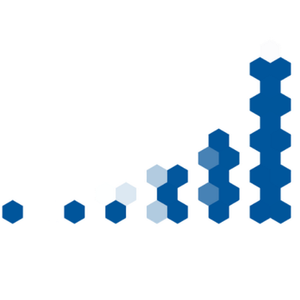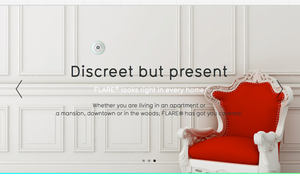Immer Mittwochs erscheint auf neunetz.com eine kommentierte Übersicht zu den wichtigsten Entwicklungen und besten Analysen aus der Welt der vernetzten Geräte, dem 'Internet der Dinge'. Vernetzte Welt kann per Email und per RSS-Feed abonniert werden.
Top: BuddyGuard aus Berlin erhält 900.000 Euro

Nach einer erfolgreichen Kickstarter-Kampagne vergangenes Jahr, bei der 162 000 Euro zusammen kamen, und einer Anschlussfinanzierung von 200.000 Euro durch private Investoren hat BuddyGuard damit innerhalb eines Jahres insgesamt knapp 1,3 Millionen Euro einsammeln können.
BuddyGuard hat ein Securitysystem entwickelt:
Meet BuddyGuard’s FLARE®, a small but powerful device that protects you and your home all by itself.
With its HD night vision camera and multiple sensors, FLARE® can even tell the difference between residents, friends and unwanted visitors. (...)
With its family-friendly intelligence, FLARE® understands what is going on. It can even take smart decisions to safeguard you and your family all by itself.
FLARE automatically switches on when all users have left their home, and after positive identification and authentication upon re-entry, the system automatically covers the camera lens in order to protect user privacy. The device itself is can be controlled through a mobile app that is compatible with both iOS and Android.
Analysen & Berichte
Schweizerische Post startet Ende März Test eines eigenen LoRaWAN-Netzes
Die Schweizerische Post prüft den Aufbau eines eigenen Netzwerks und damit einer eigenen Infrastruktur für das Internet der Dinge. Damit sollen die Logistik unterstützt und neue kundenfreundliche Services realisiert werden können. Ende März wird auf der Achse Bern-Biel bereits ein erstes Testnetz in Betrieb genommen, wie das Unternehmen in einer Medienmitteilung bekannt gibt. Dabei will man auf den erst vor wenigen Monaten ins Leben gerufenen LoRaWAN-Standard setzen, wobei LoRaWAN für Long Range Wide Area Network steht und entsprechende Geräte weder eine SIM-Karte noch den Anschluss an ein Stromnetz benötigen sollen. Die Reichweite entsprechender Antennen beträgt je nach Topografie angeblich zwischen fünf bis 15 Kilometer.
Huawei und NB-IoT
Anwendungen für NB-IoT, das schmalbandige Internet der Dinge, wird es Anfang kommenden Jahres geben. Das kündigte Quan Yu, Chief Strategy Officer Wireless Product Line bei Huawei, am 21. Februar auf dem MWC 2016 in Barcelona an. Darunter seien Anwendungen im Bereich Smart Parking, die auch schon in deutschen Städten in Open Labs von Huawei getestet würden. (...)
Durch NB-IoT sollen niedrige Datenraten, lange Akkulaufzeiten und lange unbeaufsichtigte Betriebszeiten möglich sein. Auch Eric Parsons, Ericssons Head of Mobile Broadband, sprach von einer "Standardisierung in Rekordzeit von NB-IoT, die im März oder Juli dieses Jahr abgeschlossen" sein werde. Der Rollout beginne dann "Anfang nächsten Jahres".
Huawei ist im letzten Jahr zur Nummer drei im Smartphonegeschäft hinter Apple und Samsung aufgestiegen.
IDC: Marktzahlen für Wearables
In its first nine months selling wearables, Apple has shipped an estimated 11.6 million Apple Watches, according to a report this week from research firm IDC. That puts Apple at third place in the industry with 14.9 percent of the market, just behind Xiaomi. Fitbit is still far and away the leader, however, with 21 million shipments in 2015.
The worldwide wearable tech market, which includes fitness trackers and smartwatches, grew a staggering 172 percent last year, shipping 78.1 million units. The growth was driven by the popularity of lower-cost trackers from companies like Fitbit and the appeal of the higher-end Apple Watch, the report notes. More than one-third of all sales in 2015 happened in the fourth quarter, a 127 percent jump over the previous year's holiday season.
Smartwatches und Fitnesstracker sind natürlich nicht die gleiche Kategorie.
Dazu passend Charles Arthur über Android Wear:
My latest calculation puts the number activated at between 3.35m and 3.45m
"Passive WiFi: WLAN für das IoT"
Toms Hardware über ein MIT-Forschungsprojekt:
In Tests konnten die Forscher Daten auf 100 Fuß Entfernung (gut 30 Meter) mit bis zu 11 Mbit/s verschicken. Der Leistungsbedarf lag dabei bei maximal 60 Mikrowatt: Ein tausendstel dessen, was bei Zigbee oder Bluetooth LE für die gleiche Übertragung benötigt würde. Ein konventionelles WLAN-Verfahren wäre sogar 10.000-mal energiehungriger. Ein einziger RF-Generator würde also pro Haushalt ausreichen, um eine Unzahl von Endgeräten im Internet of Things mit dem zentralen WLAN-Router zu verknüpfen.
"Mozilla tests the waters for Firefox OS IoT apps, including a Samantha-style virtual assistant"
Project Link is described by Mozilla as “our personal user agent that understands your preferences for how you want to interact with the world of devices in your home, and automate your connected world for you.”
Originally this project was called FoxLink, and it looks like the idea here is for Link to learn from your preferences to be able to control connected devices without you getting involved, although it’s also controlled by you. The kind of intelligence Mozilla seems to be going for here reminds me more than a little of the personal assistant Samantha as envisioned in the film Her. Mozilla says that this project is still at a very early stage.
The aim of Project Sensor Web, meanwhile, is to create a network of sensors that can supply crowdsourced data that would be accessible by everyone, rather than proprietary.
Im TechCrunch-Artikel werden einige weitere Projekte vorgestellt. Mozilla hat sich einiges vorgenommen. Höchstwahrscheinlich viel zu viel.
"The Internet of Things Is Revolutionizing Patient Care in Healthcare"
In fact, forecasters state that, by 2020, about 4 billion medical tracking devices will be connected to patients for purposes of monitoring blood pressure, cholesterol, blood sugar, and so forth. And the one connecting element that will provide for all of this data accumulation and monitoring will be the smart phone, linking patient data collection with the Internet.
Here is how the Internet of Things will assist health and wellness in wonderful ways:
Siehe auch „The Internet Of Medicine Is Just What The Doctor Ordered“ in Vernetzte Welt #43.
Das Internet der Dinge und Big Data
The use cases across industries are endless. Hospitals are providing better services at lower costs. Transportation and shipping companies are reducing maintenance costs and improving delivery service. Energy companies are producing more energy at lower cost and drastically reducing research and development costs for exploring new mining and drilling sources, and similar activities.
All these use cases are being driven by big data technologies. It is the business people, not just the IT people, who finally want big data now. We are seeing a surge in job openings for IT professionals with big data expertise, along with a huge increase in demand for data scientists and Ph.D.s. IoT is the problem that big data solutions were born to solve. We just did not know that a few years ago. Now we do.
Bosch will dieses Jahr 14.000 Hoschschulabsolventen einstellen
Bosch will in diesem Jahr weltweit rund 14 000 Hochschulabsolventen einstellen, um seinen Wachstumskurs fortzusetzen. Künftig sollen immer mehr Software-Spezialisten Jobs beim internationalen Technologie- und Dienstleistungsunternehmen finden. „Die Vernetzung über das Internet der Dinge verändert das Geschäft von Bosch und damit unseren Personalbedarf stärker als je zuvor“, erklärt Christoph Kübel, Geschäftsführer und Arbeitsdirektor der Robert Bosch GmbH.
"Zukunft: Telecom-Konzerne wollen an Hightech-Spitze"
Die Telekom kooperiert mit dem Startup von US-Popstar will.i.am, der ein Wearable in die Partnerschaft einbringt. Für Telekom-Chef Höttges ist das disruptiv.
Deutscher Cargo-Kult.
Sicherheit im Internet der Dinge
Guter Übersichtsartikel auf TechCrunch mit einem sehr wahren Satz:
The security of a smart object is only as strong as its weakest connected link.
Und ein Ausblick:
Brands would be wise to understand that the coming influx of consumer data is a potential revenue stream that must be protected and nurtured. As such, the perception of privacy and respect are tantamount for long-term engagement with customers. So much so that it is likely that product manufacturers will start changing their business models to create data-sharing incentives and perhaps even give their products away for free.
Due to its massive potential, the Internet of Things is advancing apace, driven largely by technology companies and academic institutions. However, only through wide-scale education and collaboration outside of this group, will it truly hit full stride and make our processes, resources utilization and, ultimately, our lives, better.
Meldungen
- Macht der Molekularsensor Scio das Smartphone bald zum Tricorder?
- Internet der Dinge: Ubuntu Core erhält Referenzplattform für ARM 64
- The Raspberry Pi 3 Is Built for the Internet of Things
- MIT Grew A Solar Cell Light Enough To Slap On Just About Anything
- Nest Shuttering Data Service MyEnergy
- But First, Coffee: Now You Can Brew Your Nespresso With an App

